Dengue Crisis In Delhi: Sees Four-Year High With 2,400+ Cases Amid Strain On Healthcare!
Dengue cases in Delhi hit a 4-year high with over 2,400 cases in October. Strained healthcare, seasonal factors, and community efforts fuel the surge.
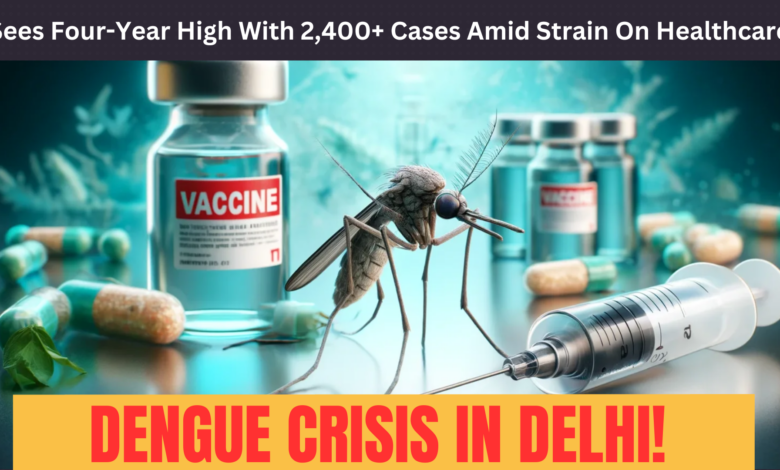
The buzz in Delhi was alarming, very literally, in October. It is the highest spike in cases that the city has seen in four years, sparking fears across neighbourhoods, as the city documented more than 2,400 dengue cases in a single month. Health officials are racing against time to contain the spread of this mosquito-borne menace, and hospitals are filling up. With poor drainage in the pockets of stagnant water left due to an extended monsoon and the dense urban clusters themselves being the best breeding grounds for the beast, Delhi is struggling with an outbreak, forcing residents to take extra precautions. As the city braces for more, the question lingers: what is fuelling this unprecedented surge?

Delhi recorded over 2,400 dengue cases in October alone—the highest in four years, and there has been a dramatic rise. Compared to previous years, though, this spike is enormous. In October 2020, there were about 1,000 reported cases, and the numbers have steadily increased. Part of the health data tells us that a case count this high hasn’t occurred since 2019, when the city last witnessed such a chain outbreak.
The recent figures are incredibly worrying, given the upward trend in mosquito-borne illnesses, even when such awareness campaigns and public health measures are in place. The rising numbers only underscore the persistent challenge of dengue for Delhi’s public health infrastructure and the importance of more significant preventive efforts during peak mosquito breeding seasons, officials said.
How Monsoon, Stagnant Water, and Waste Fuel Delhi’s Dengue Surge
Hydrological conditions are the first of several factors to combine into a perfect storm for Delhi’s recent dengue surge. This year’s monsoon season was so prolonged that the many streets, residential areas and construction sites left behind the unsightly and ideal breeding grounds of the Aedes mosquito, the primary vector of dengue.
Mosquitoes’ usual life cycle requires water, which urban areas are especially prone to if rainfall runs its course with a stretch longer than usual. In addition, many parts of the city suffer from leftover waste that cannot be disposed of — plastic waste, debris and such containers that have accumulated, leaving behind stagnant, unattended reservoirs that swamp mosquitoes to reproduce uncontrollably.
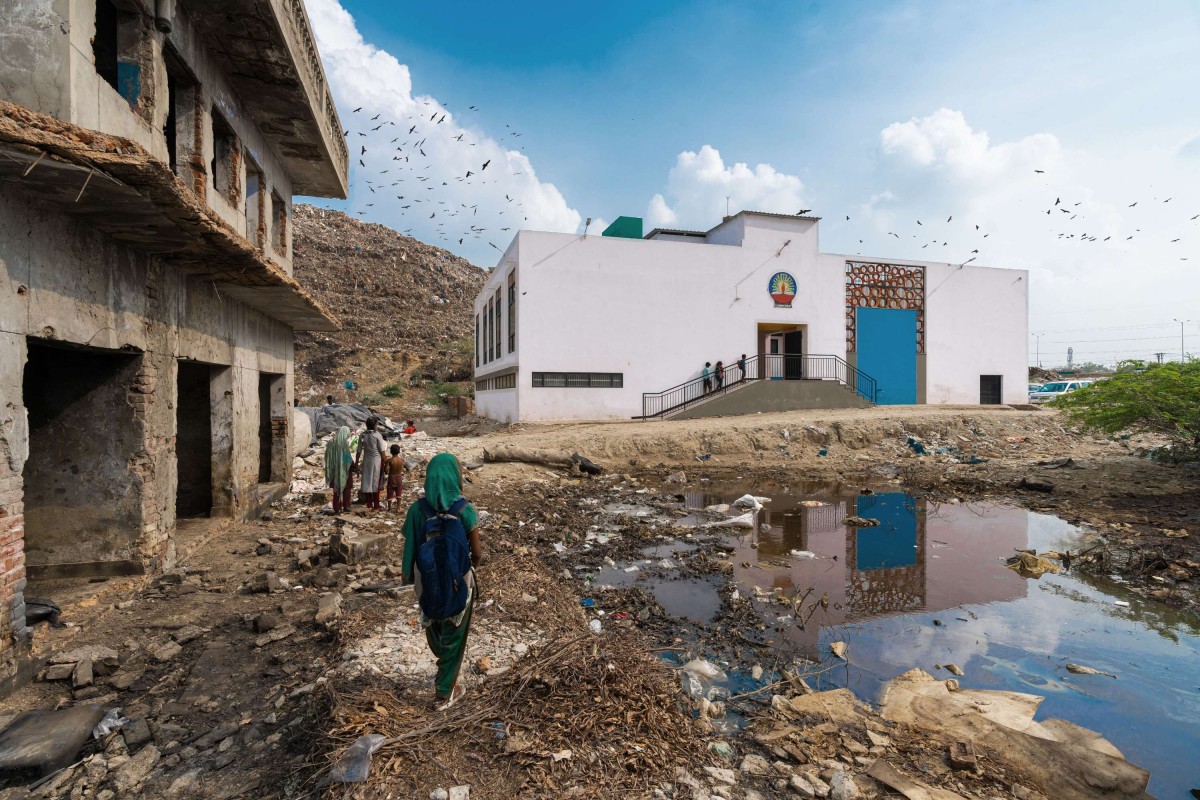
It also exposes previously neglected spots, like potholes and roadside ditches, to further breeding conditions because of poor drainage systems. However, in crowded population clusters, coupled with these environmental lapses, stopping mosquito populations from growing is complicated, especially given the steep rise in cases this year.
The disease is shown to be an enduring and adaptable organism by critical outbreaks in Delhi (1996, 2003, 2006, 2010, 2013, 2015). In the 1970s, the Urban Malaria Scheme (UMS) was introduced. In 2003, the National Vector Borne Disease Control Programme (NVBDCP) delegated mosquito control to municipal bodies and emphasised anti-larval measures alongside environmental efforts. However, in circumstances where solid waste management is poor, urbanisation continues to increase habitats for mosquito breeding, especially in Delhi, which has contributed to an escalation in the prevalence of the disease.
Aedes aegypti mainly spreads dengue, and recent climatic changes, such as increased temperatures, high humidity, and irregular monsoon patterns, have provided suitable conditions for mosquito proliferation. Studies have associated rising temperatures with dengue transmission; for example, a two-degree increase in temperature has been linked to a significant rise in dengue cases.
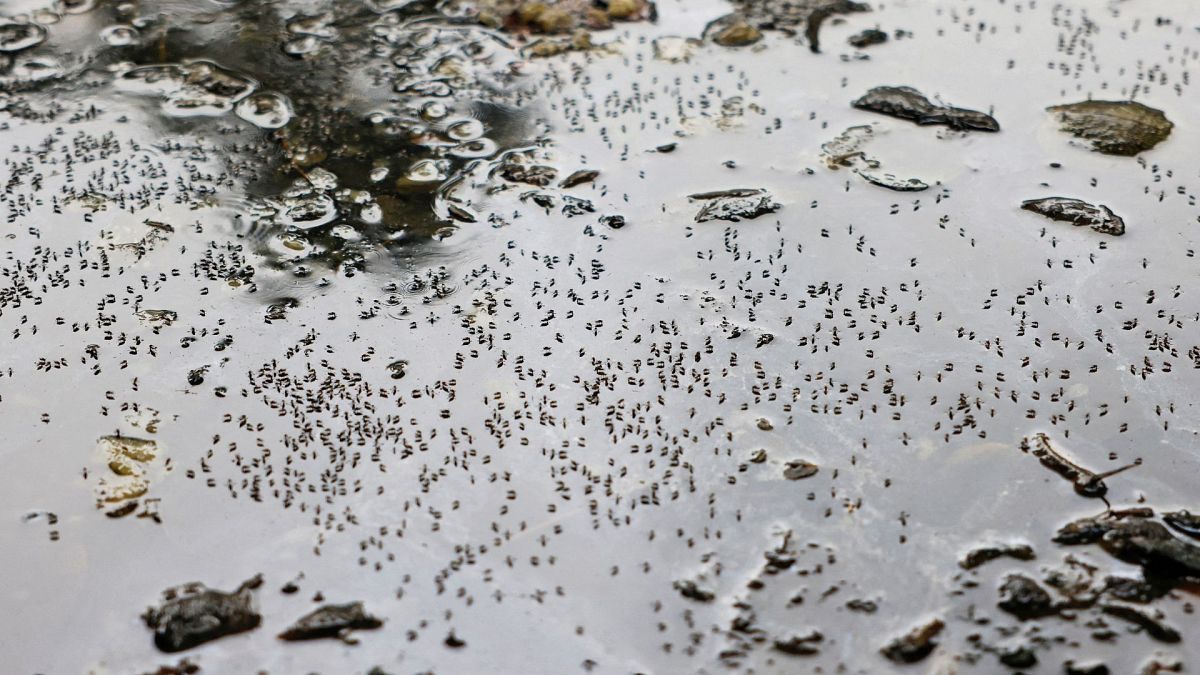
The growing urban landscape, changing climate, and infrastructure challenges in Delhi highlight an exciting opportunity to strengthen our preventive strategies and public health efforts to manage and reduce dengue outbreaks effectively.
Delhi’s Health System Under Pressure: Dengue Surge Strains Hospitals and Disrupts Care
Dengue fever, is a burden that overloads both the health system and the Indian economy, consuming billions of dollars yearly. More than 2,400 cases were reported in Delhi in October 2024, the highest incidence of this disease in the last four years. The disease has burdened hospitals and healthcare centres through rising admission rates and medical expenses.
This increase leads to a gradual patient recovery but negatively affects worker productivity and overall economic benefit. The government also allocates funds for vector control, public education, and treatment. The monetary losses highlight the importance of broad strategies to decrease the occurrence of this disease in the population and pare down its economic consequences for India.
Delhi’s healthcare infrastructure is being overstretched as it battles a surge in dengue cases, which continue to surge despite heavy campaigning by the city government to curb mosquito breeding using essential oils. Thousands of dengue patients are seeking treatment, hospital bed occupancy rates are off the scale in emergency wards and fever clinics, and many facilities are struggling to cope.
As of September 10, over 675 dengue cases have been reported in Delhi, with August seeing the highest number of infections. The Najafgarh zone recorded the most cases at 103, followed closely by the Shahdara North zone with 84 cases. Additionally, the city has faced 260 malaria cases and more than 30 cases of Chikungunya, placing an increased strain on healthcare resources.
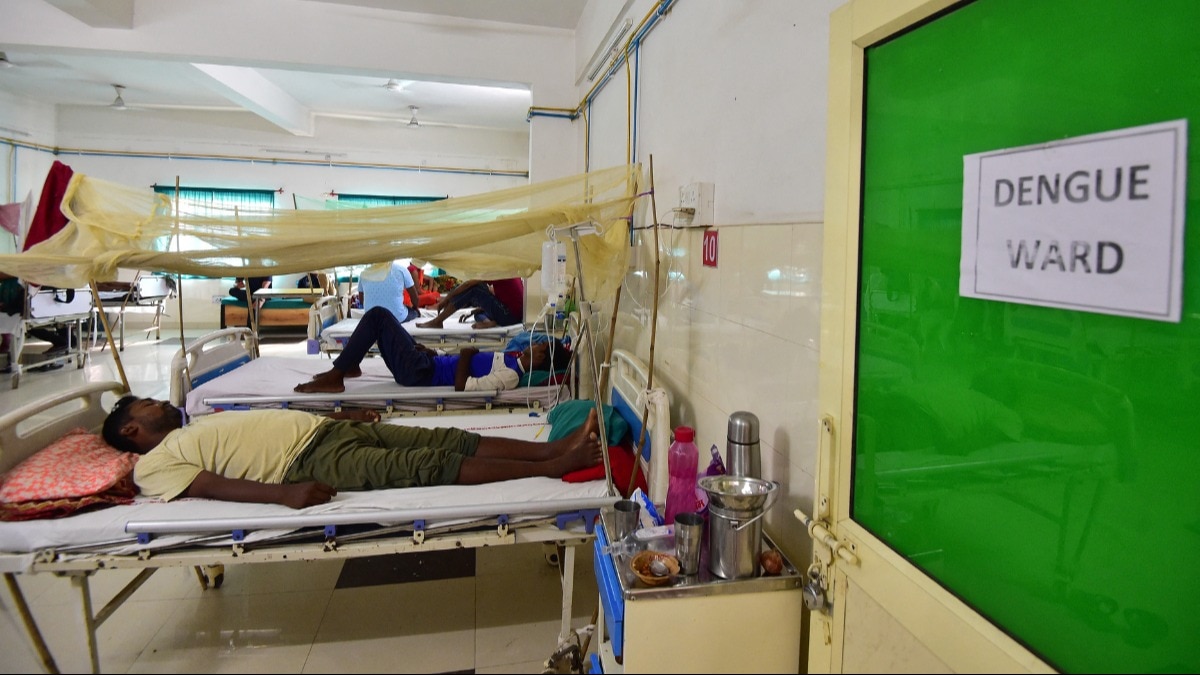
Many are seeing hospital bed occupancy rates soar, especially in emergency wards and designated fever clinics, with many facilities struggling to contain the tidal wave. Specialised dengue treatment units are often overcrowded, filling them, causing an overflow of patients into general wards and a scarcity of resources like IV fluids, platelet supplies, and diagnostic kits, all critical to managing dengue patients.
As a result, many healthcare centres prioritise dengue patients, which strains their ability to handle non-dengue emergencies and routine treatments. Medical staff’s responsibilities toward dengue patients and those requiring other services are overwhelming, putting additional pressure on already stretched-thin personnel.
The high demand underscores the need for effective contingency plans and equipped healthcare facilities to tackle mosquito-borne disease outbreaks. What’s alarming about the current dengue crisis is its emphasis on the weaknesses in Delhi’s health infrastructure and the need for comprehensive system modernisation to withstand such a public health emergency without compromising the quality of care across all services.
Are Delhi’s fumigation and awareness efforts enough to curb the dengue surge, or do citizens share the responsibility?
Delhi’s municipal corporations and health departments are stepping up efforts to curtail the outbreak through a multi-pronged effort in response to the rising number of dengue cases. The city has deployed extensive fumigation drives, particularly in high-risk zones like Najafgarh and Shahdara North, which reported the maximum number of cases.

Mosquito breeding is reduced inside and outside homes and public places such as parks and construction sites. Municipal bodies have begun organising public campaigns to promote preventive measures. These measures include keeping water from accumulating, applying repellents, and preventing water from getting in contact. Programs offer manuals, advertisements, and SMS alerts to combat property infestations and educate residents about mosquito breeding risks.
The government has given specific guidelines to residential societies, schools, and offices to carry out weekly checks and eliminate all mosquito breeding sites. Due to improper waste disposal and water logging, health inspectors have conducted increased field visits to check if the areas comply. If not, they have increased visits to ensure compliance.
The MCD has even served legal notices to more than 1.14 lakh people, registered 39,338 challans and fines worth ₹ 24.82 lakh for violating municipal bylaws, and lodged police complaints against 9,241 more defaulters. The civic body plans to increase fogging activities and attributes its house-to-house inspections, regular insecticide spraying, and campaigns to reducing the spread of the disease.
Also, the health department has instructed hospitals and clinics to stay ready in situation patients surge and maintain adequate stock of dengue diagnostic kits, fluids, and medicine. Delhi’s civic bodies and health authorities have taken these initiatives proactively to mitigate the dengue surge. Still, the speed of spread shows how efforts to control vector-borne diseases continue to prove daunting in urban environments.
On the other hand, with the rates of vector-borne diseases increasing significantly, the people of Delhi have had to avail themselves of private fumigation services as they feel that civic amenities need to make more efforts. A 24-year-old resident living in a soggy area said she did fumigation independently because she does not depend on MCD alone. Similarly, the residents of Sant Nagar collected ₹6,000 to spread insecticide around their locality.
Community Efforts and Awareness Drive: A United Front in Delhi’s Battle Against Dengue
With the government and local bodies working hard to educate citizens on effective mosquito control strategies, public awareness regarding dengue prevention is no less critical. Residents are also encouraged to take personal protective measures, such as covering containers holding water, using mosquito nets, and, at all times, eliminating standing water around their homes, which is an excellent way of controlling the breeding of mosquitoes.
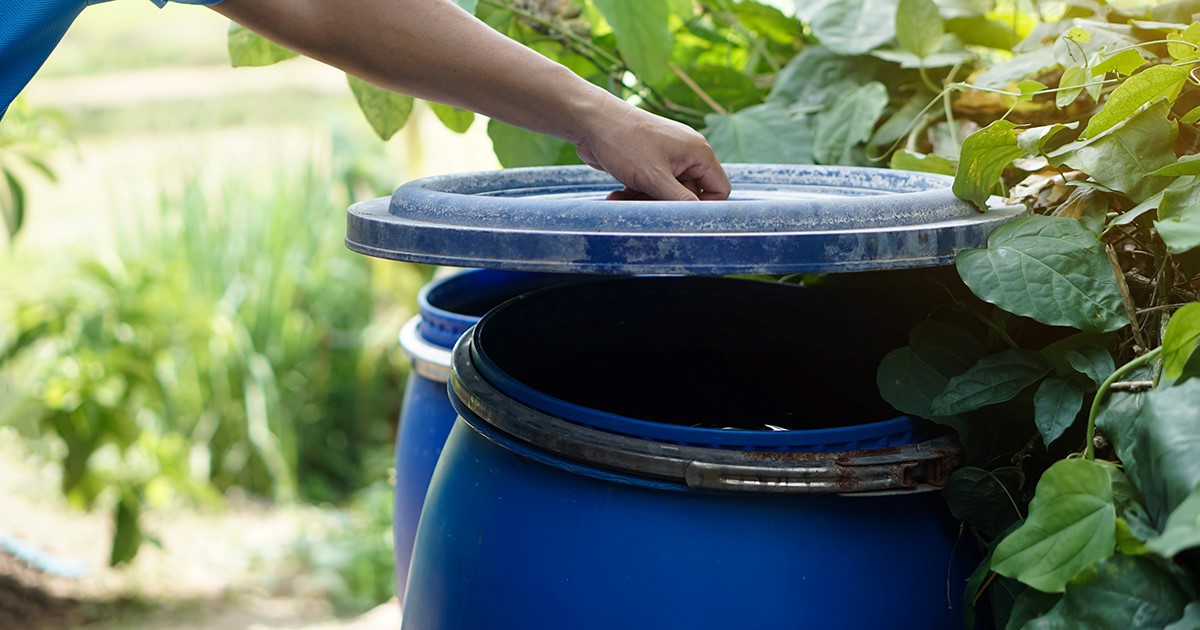
These awareness campaigns highlight tiny yet highly effective changes, such as regularly emptying the plant saucers, ensuring good water drainage, and sealing water tanks at all costs to lessen the risk of mosquito breeding.
Efforts focused on community involvement are becoming more common locally and nationally to tackle dengue prevention. Neighbourhood clean-up initiatives and the supervision of water sources preserve frequently neglected areas.
When community members collaborate, they can strengthen preventive strategies to foster a healthier environment, which enables public health resources to be directed towards other priorities. Practical preventive approaches to dengue rely on cooperation between civic authorities and active participation from the community; therefore, community engagement is a crucial element for success.
Seasonal Weather Patterns: How Climate Fuels Dengue Outbreaks in Delhi
Climate is a significant factor in recurring dengue fever outbreaks. Warm temperatures and heavy rainfall create ideal mosquito breeding conditions, especially with stagnant water from discarded containers, clogged drains, and uncovered storage.
Stagnant water is a breeding ground for Aedes aegypti mosquitoes, which transmit dengue fever. Warmer temperatures increase their activity and reproduction rates, while high humidity during the monsoon further supports their survival.

Increased rainfall leads to a rise in the mosquito population, which causes a surge in dengue cases during the post-monsoon period, as seen in Delhi. Even slight temperature increases from global warming can promote the spread of vector-borne diseases by enhancing mosquito survival and their life cycle.
The seasonal weather patterns significantly affect dengue transmission dynamics, highlighting the need for continual surveillance and proactive actions to mitigate its negative impact on public health.
Health Experts Stress Early Diagnosis and Preventive Measures to Combat Dengue
Health experts stress early diagnosis and fast medical care are important in controlling dengue and avoiding complications. Dr. R. S. Sharma, a noted epidemiologist, says that one of the most useful ways to manage dengue cases is through early detection since it can prevent severe complications of Dengue Hemorrhagic Fever and Dengue Shock Syndrome.
Experts advise seeking medical attention for symptoms like high fever, severe headache, joint pain, or rashes, as early treatment reduces risks. Using mosquito nets and repellents and eliminating stagnant water is crucial for limiting mosquito populations and reducing virus transmission.

These can encompass public awareness campaigns and neighbourhood clean-up drives focusing on the source of the problem—the breeding places for mosquitoes—to prevent its spread. According to health experts, a combination of individual effort, community effort, and medical vigilance would reduce the impact of dengue fever outbreaks.




